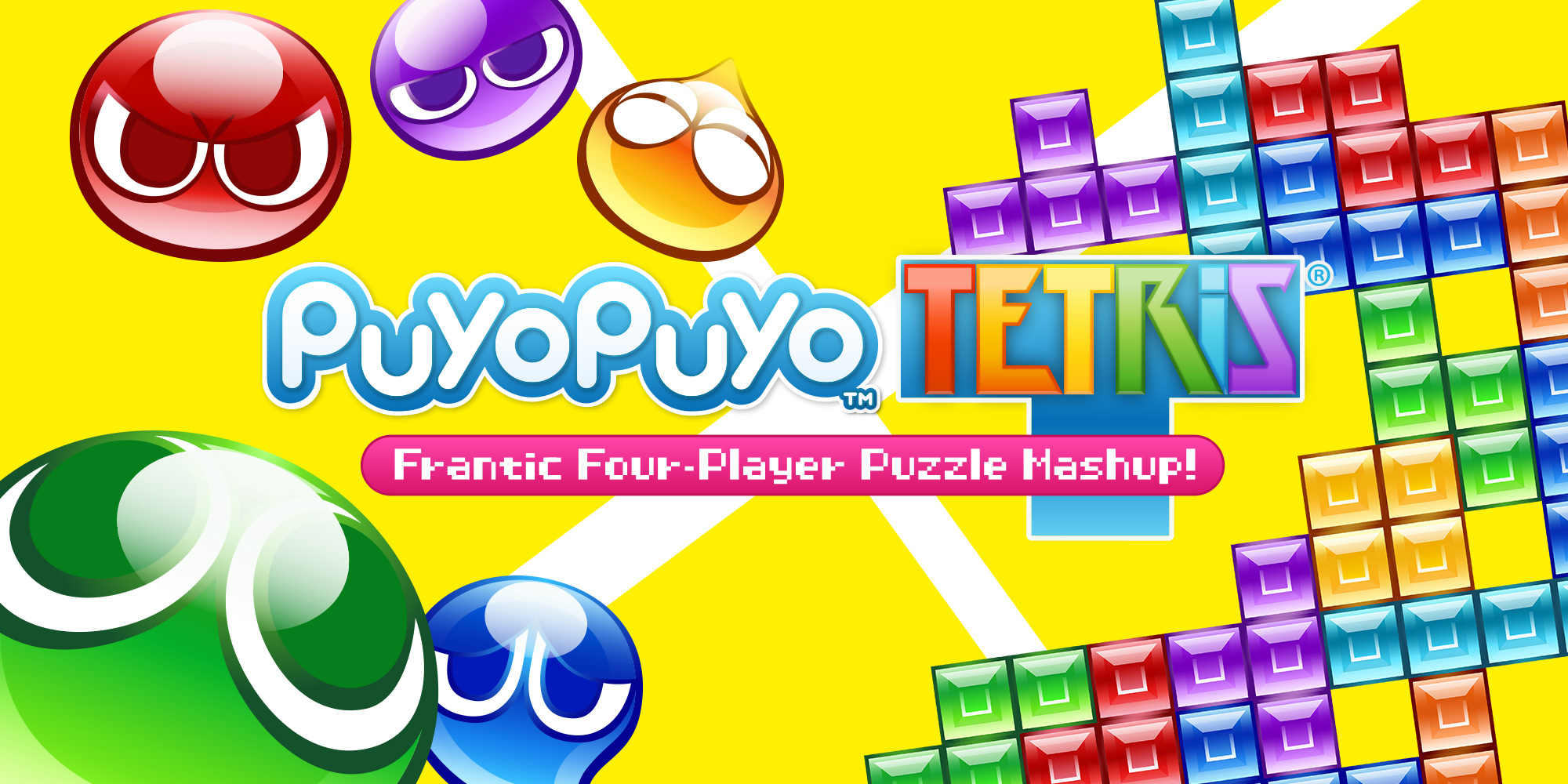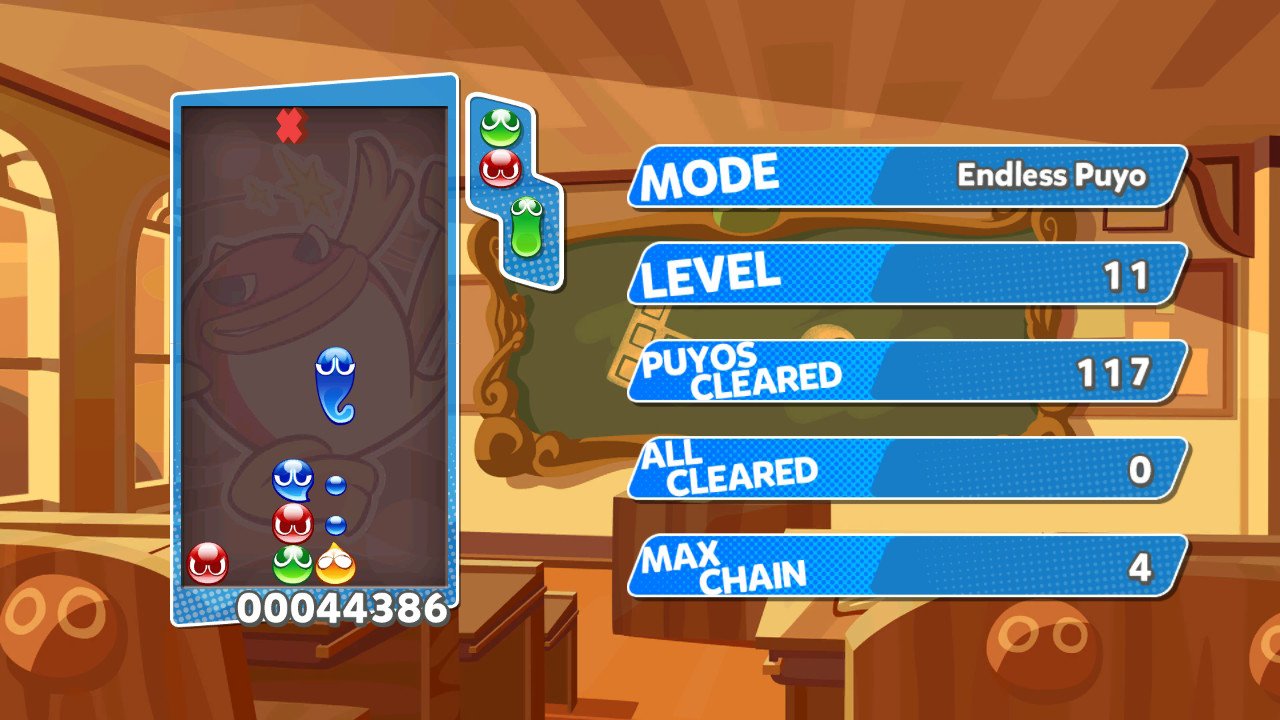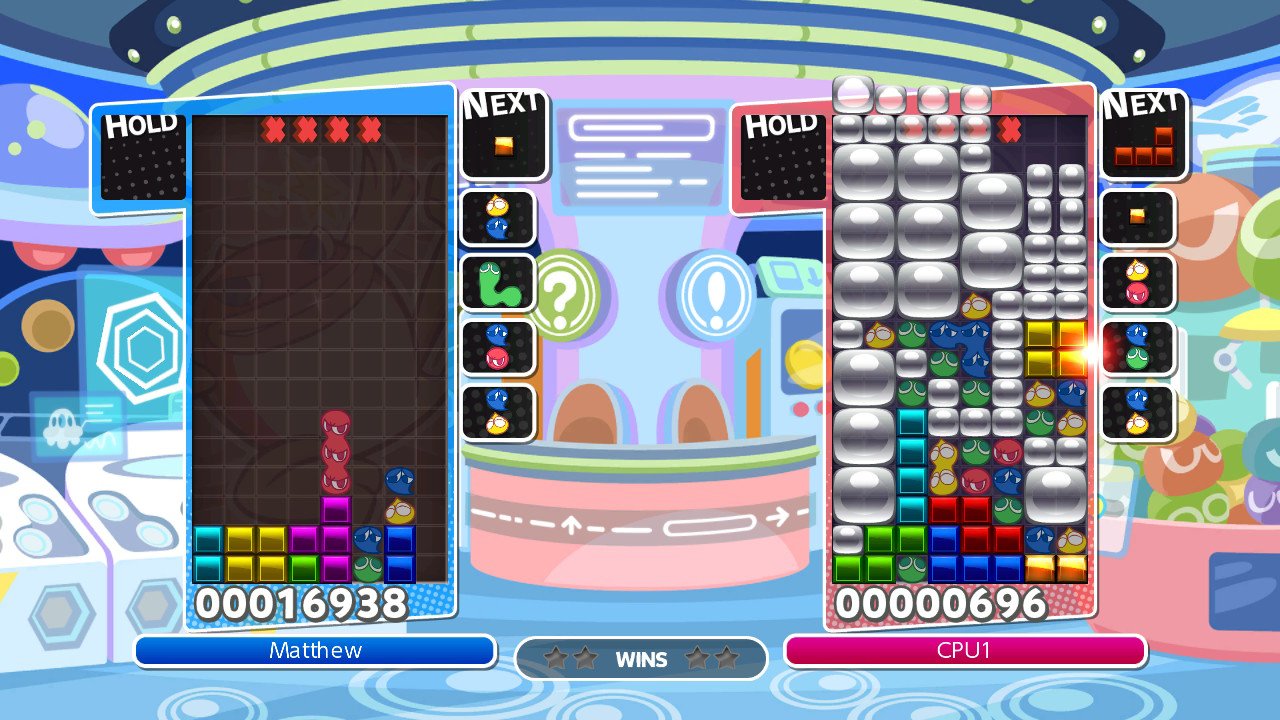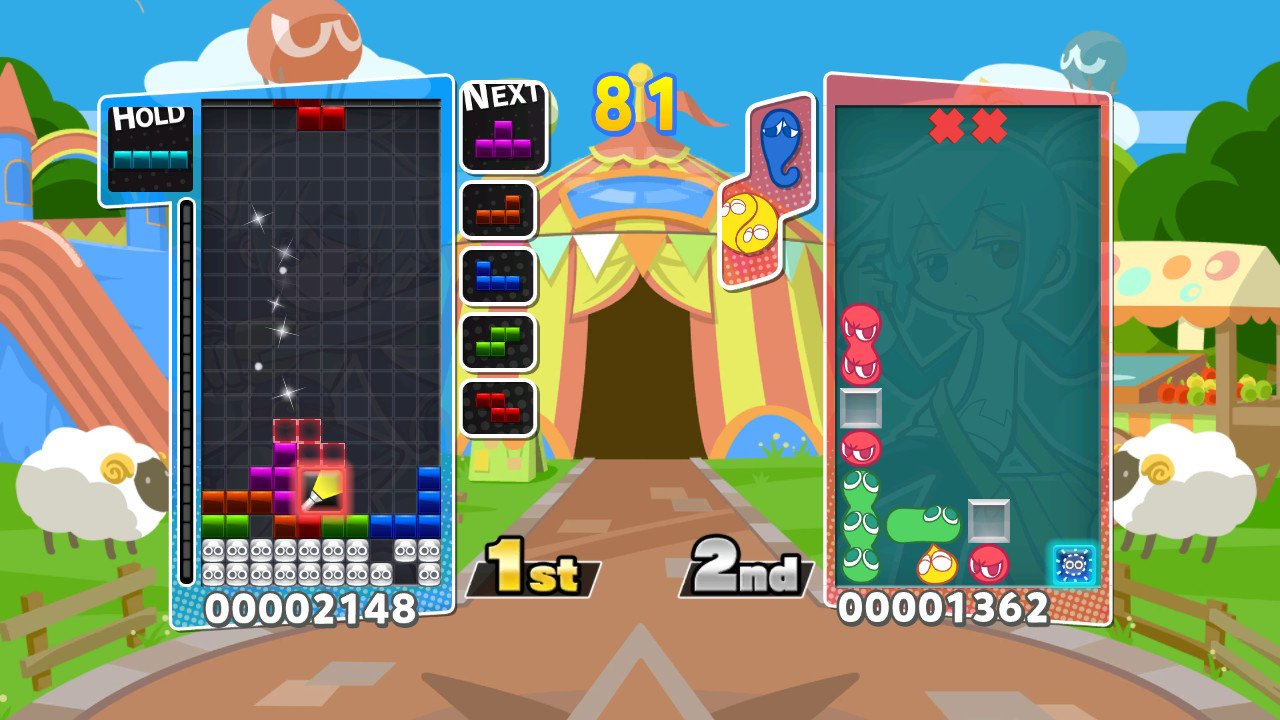
Puyo Puyo, whether you know it as Puyo Pop, Kirby’s Avalanche, or Dr. Robotnik’s Mean Bean Machine, isn’t exactly a household name. In fact, Puyo Puyo is such a niche game in the west that it makes most of the games we talk about on Niche Gamer look like CoD in comparison. However, you can’t say the same about Tetris. When SEGA released their crossover of the two puzzle games back in 2014, people got excited. After three years of waiting, the game has finally come over to the west. Was it worth the wait?
Puyo Puyo Tetris
Publisher: Sega
Developer: Sonic Team
Platform: PlayStation 4, Nintendo Switch (Reviewed on Switch)
Release Date: April 25, 2017
Players: 1-4
Price: $29.99 (PS4/Switch eShop)/ $39.99(Switch Retail) (Review Copy Purchased)
Puyo Puyo Tetris looks fine. It won’t win any awards for its graphics, and it isn’t pushing either console to their graphical limits. Seeing as the was originally released on last generation consoles back in 2014, however, this isn’t really an issue.
Character designs use an anime style, and they look quite nice. Characters range from the mundane, such as teenagers or robots, to bear scientists and talking fish. All of the characters are unique, which makes it easy to pick a favorite to play with.

Puyo Puyo Tetris’ gameplay is some of the most fun I’ve had on the Switch so far. Tetris is… Tetris. Everyone knows how to play it. Puyo Puyo, however, is a bit more complicated. Similar to Tetris, Puyo Puyo involves clearing out your grid by matching objects. Unlike Tetris, however, tetrominoes are replaced with Puyo, slime like orbs that stick to other Puyo of the same color. Puyo drop from the top of the grid in pairs and will disappear when four Puyo of the same color meet. Also unlike Tetrominoes, Puyo are affected by gravity and will fall if the platform underneath it disappears. This is used to create chains of Puyo Puyo matches, quickly clearing up your grid and giving you plenty of points.

Puyo Puyo is mostly played competitively, with two players trying to make the other’s grid fill to the top with Puyo. This is done via garbage blocks, which are sent to the opponent’s grid when you make a chain. The opponent still has time to neutralize or even reflect the garbage blocks back to you, but they can quickly fill up your grid if you aren’t careful.
While my description may sound boring, in practice it’s absolutely exhilarating. Setting up complex chains and countering your opponent’s attacks can be a total blast to play, and the feeling of executing a long chain is wonderful. Unlike the name suggests, however, Puyo Puyo and Tetris don’t really combine Puyo Puyo Tetris. While they do in the game’s Fusion mode, it still mostly keeps the Puyo and Tetrominoes separate from each other. Most of the time, you’ll be playing one versus the other, which works surprisingly well.

The game is a perfect match for multiplayer, especially on the Switch. With the Joy-Con acting as two separate controllers, it’s easy to quickly challenge a friend to a game of Tetris, and then completely destroy them when they don’t know what Puyo Puyo is and you set off a chain that instantly knocks them out.
When you lose all of your friends because of your scheming, there’s also a robust online multiplayer mode. You can select which modes you want to play, and keep track of your global and regional rank to see how you fare with the rest of the world. In all of my matches online, I’ve only had one disconnect error and very little lag, making it a mostly solid experience.
The only blight on this gameplay experience is Party mode. You may be asking yourself: Why does a competitive puzzle game have a mode that almost entirely throws skill out the window for random item drops? I don’t know, but it most definitely doesn’t work. In fact, the only genuine anger and frustration I’ve had playing the game came from this mode. It’s one of the only modes that’s completely unbalanced (Puyo Puyo absolutely destroys Tetris), and features an absolutely infuriating power up where you can steal 1500 points from your opponent. Since you need the most points to win, this item can literally win the match for whoever gets it. Part mode either needed more balancing, or to be removed altogether.

Puyo Puyo Tetris requires that the player learn the ins and outs of both Tetris and Puyo Puyo, with more advanced techniques like combos, T-Spins, Stair Stacks, and Sandwiches becoming regular parts of matches between the two games. The game offers plenty of guidance in the story mode and in separate lessons, however, so most players should have the ropes of both games in no time.
The story mode also contains cut scenes which are fully voice-acted, and they aren’t half bad. There’s no character with an annoying voice, and they’re all pretty distinct and match the character quite well. When it comes to music, it’s fine. Like the graphics, they’re nothing to write home about. They do, however, fit the frantic fun of matches and keep you ready for what’s ahead.

Speaking of story, the game actually has a story and it’s not bad, either. While the plot itself isn’t epic or as gripping as most games, the story more than makes up for it with its characters and its writing. It doesn’t take itself too seriously, offering plenty of chances for the game to laugh at its own absurdities in what should be a simple plot about Puyo Puyo and Tetris colliding.
Puyo Puyo Tetris is pure fun. I could see myself spending hundreds of hours perfecting my skills in both Puyo Puyo and Tetris, and playing quick games with friends during some downtime. While thirty dollars may seem steep for what is on its surface a simple puzzle crossover game, it is most definitely worth your time. I only hope that Sega continues to support Puyo Puyo in the future.
PuyoPuyo Tetris was reviewed on Nintendo Switch using a review copy purchased by Niche Gamer. You can find additional information about Niche Gamer’s review/ethics policy here.
The Verdict: 8.5
The Good:
- Addicting Gameplay
- Surprisingly Good Story
- Good Character Design
- Fun Multiplayer
The Bad:
- Party Mode is Unbalanced and Out of Place
- Music Isn’t Very Memorable